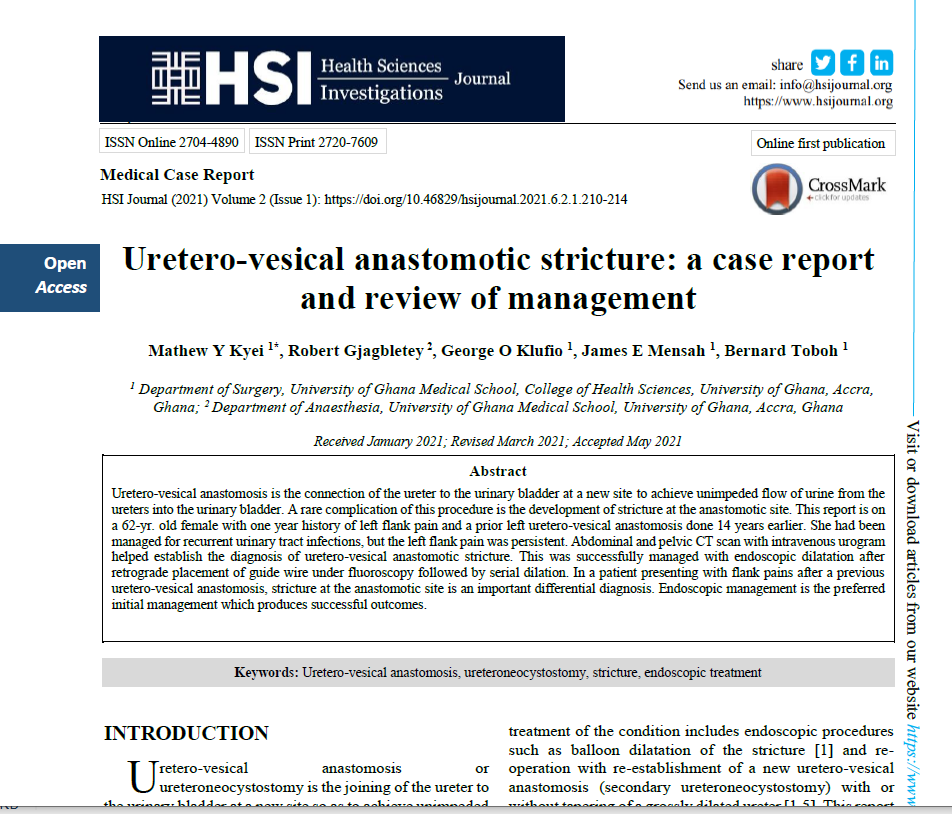Uretero-vesical anastomotic stricture. A case report and review of management
Abstract
Uretero-vesical anastomosis is the connection of the ureter to the urinary bladder at a new site so as to achieve unimpeded flow of urine from the ureters into the urinary bladder. A rare complication of this procedure is the development of stricture at the anastomotic site.
This report is on a 62 year old female with one year history of left flank pain and a prior left uretero-vesical anastomosis 14 years earlier. She had been managed as recurrent urinary tract infection without pain relief. Abdomen pelvic CT Scan with intravenous urogram helped establish the diagnosis of uretero-vesical anastomotic stricture. This was successfully managed with endoscopic dilatation after placement of a guide wire retrogradely under fluoroscopy followed by serial dilation.
In a patient presenting with flank pains after a previous uretero-vesical anastomosis, stricture at the anastomotic site is an important differential diagnosis. Endoscopic management is the preferred initial management with good success.


